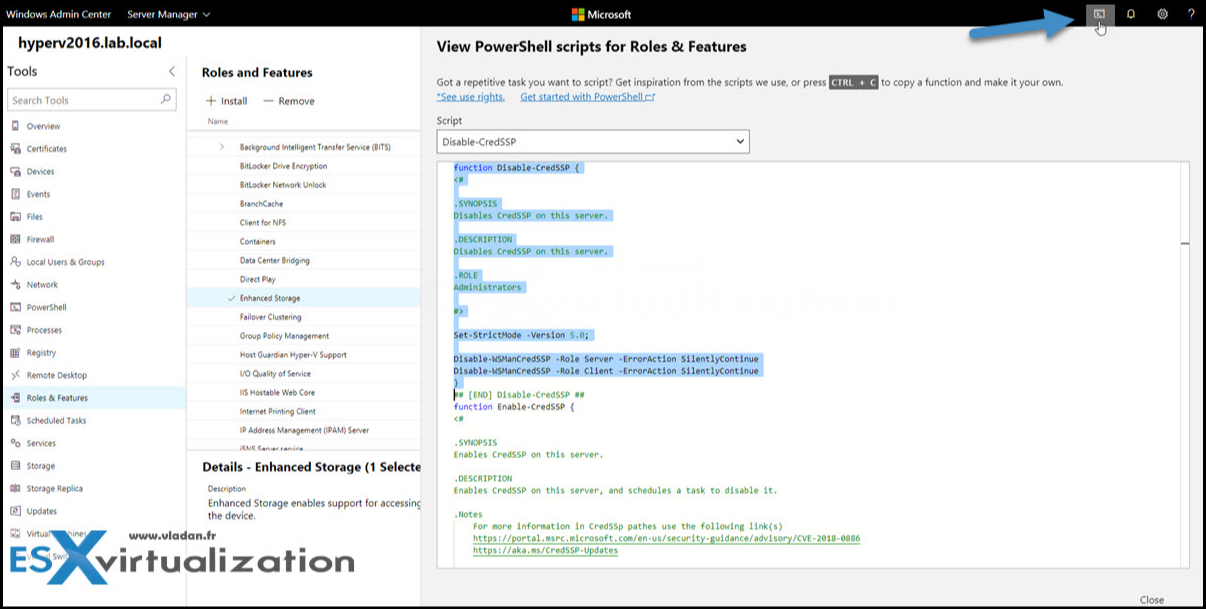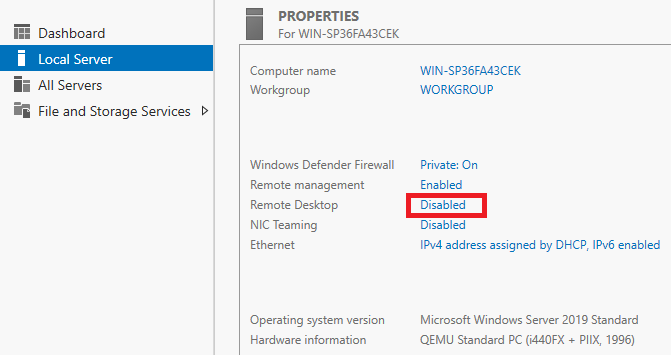- Remote Desktop Windows Server 2019 Essentials Requirements
- Windows Server 2019 Essentials Remote Desktop Session Host
- Remote Desktop Gateway Windows Server 2019 Essentials
- Remote Desktop Windows Server 2019 Essentials Dashboard
(The XP/VS Server system must be member of a Windows Server Domain - does not work on Windows Home editions, Windows 8/8.1./10/ Windows Server 2012 (R2)/2016/2019) TSX USB Allows you to use all client attached USB devices in your Remote Desktop session as if they were directly attached to the local USB port of the server. Mar 04, 2021 Windows Server 2019 Essentials update. While Microsoft will still be releasing an “Essentials” SKU for Windows Server 2019, it will be completely devoid of everything that we recognize as being part of Windows Server Essentials in its current form. Hi, No, Windows Server 2019 Essentials does not have the ability to allow 10 Remote Desktop users. You can only connect to it via Remote Desktop for administrative purposes. The only RDS Role Service available for use is RD Licensing server.
Applies To: Windows Server 2016, Windows Server 2019
Dec 20, 2018 Note: In Windows Server 2019 Essentials edition, remote desktop is already enabled by default so you will not need to manually do this. Remote desktop can be enabled through the graphical user interface (GUI) with the following easy steps. Allowing Remote Desktop With The GUI. As you may know, Windows Server 2019 Standard Edition no longer has the 'Essentials' role available and the 'Essentials Edition' of 2019 no longer has any of the features small businesses relied on. All the below are gone as of Server 2019.
When it comes to supported configurations for Remote Desktop Services environments, the largest concern tends to be version interoperability. Most environments include multiple versions of Windows Server - for example, you may have an existing Windows Server 2012 R2 RDS deployment but want to upgrade to Windows Server 2016 to take advantage of the new features (like support for OpenGLOpenCL, Discrete Device Assignment, or Storage Spaces Direct). The question then becomes, which RDS components can work with different versions and which need to be the same?
So with that in mind, here are basic guidelines for supported configurations of Remote Desktop Services in Windows Server.
Note
Make sure to review the system requirements for Windows Server 2016 and system requirements for Windows Server 2019.
Best practices
Use Windows Server 2019 for your Remote Desktop infrastructure (the Web Access, Gateway, Connection Broker, and license server). Windows Server 2019 is backward-compatible with these components, which means a Windows Server 2016 or Windows Server 2012 R2 RD Session Host can connect to a 2019 RD Connection Broker, but not the other way around.
For RD Session Hosts - all Session Hosts in a collection need to be at the same level, but you can have multiple collections. You can have a collection with Windows Server 2016 Session Hosts and one with Windows Server 2019 Session Hosts.
If you upgrade your RD Session Host to Windows Server 2019, also upgrade the license server. Remember that a 2019 license server can process CALs from all previous versions of Windows Server, down to Windows Server 2003.
Follow the upgrade order recommended in Upgrading your Remote Desktop Services environment.
If you are creating a highly available environment, all of your Connection Brokers need to be at the same OS level.
RD Connection Brokers

Windows Server 2016 removes the restriction for the number of Connection Brokers you can have in a deployment when using Remote Desktop Session Hosts (RDSH) and Remote Desktop Virtualization Hosts (RDVH) that also run Windows Server 2016. The following table shows which versions of RDS components work with the 2016 and 2012 R2 versions of the Connection Broker in a highly available deployment with three or more Connection Brokers.
| 3+ Connection Brokers in HA | RDSH or RDVH 2019 | RDSH or RDVH 2016 | RDSH or RDVH 2012 R2 |
|---|---|---|---|
| Windows Server 2019 Connection Broker | Supported | Supported | Supported |
| Windows Server 2016 Connection Broker | N/A | Supported | Supported |
| Windows Server 2012 R2 Connection Broker | N/A | N/A | Not Supported |
Support for graphics processing unit (GPU) acceleration
Remote Desktop Services support systems equipped with GPUs. Applications that require a GPU can be used over the remote connection. Additionally, GPU-accelerated rendering and encoding can be enabled for improved app performance and scalability.
Remote Desktop Services Session Hosts and single-session client operating systems can take advantage of the physical or virtual GPUs presented to the operating system in many ways, including the Azure GPU optimized virtual machine sizes, GPUs available to the physical RDSH server, and GPUs presented to the VMs by supported hypervisors.
See Which graphics virtualization technology is right for you? for help figuring out what you need. For specific information about DDA, check out Plan for deploying Discrete Device Assignment.
GPU vendors may have a separate licensing scheme for RDSH scenarios or restrict GPU use on the server OS, verify the requirements with your favorite vendor.
GPUs presented by a non-Microsoft hypervisor or Cloud Platform must have drivers digitally-signed by WHQL and supplied by the GPU vendor.
Remote Desktop Session Host support for GPUs
The following table shows the scenarios supported by different versions of RDSH hosts.
| Feature | Windows Server 2008 R2 | Windows Server 2012 R2 | Windows Server 2016 | Windows Server 2019 |
|---|---|---|---|---|
| Use of hardware GPU for all RDP sessions | No | Yes | Yes | Yes |
| H.264/AVC hardware encoding (if suppported by the GPU) | No | No | Yes | Yes |
| Load balancing between multiple GPUs presented to the OS | No | No | No | Yes |
| H.264/AVC encoding optimizations for minimizing bandwidth usage | No | No | No | Yes |
| H.264/AVC support for 4K resolution | No | No | No | Yes |
VDI support for GPUs
The following table shows support for GPU scenarios in the client OS.
| Feature | Windows 7 SP1 | Windows 8.1 | Windows 10 |
|---|---|---|---|
| Use of hardware GPU for all RDP sessions | No | Yes | Yes |
| H.264/AVC hardware encoding (if suppported by the GPU) | No | No | Windows 10 1703 and later |
| Load balancing between multiple GPUs presented to the OS | No | No | Windows 10 1803 and later |
| H.264/AVC encoding optimizations for minimizing bandwidth usage | No | No | Windows 10 1803 and later |
| H.264/AVC support for 4K resolution | No | No | Windows 10 1803 and later |
RemoteFX 3D Video Adapter (vGPU) support
Note
Because of security concerns, RemoteFX vGPU is disabled by default on all versions of Windows starting with the July 14, 2020 Security Update and removed starting with the April 13, 2021 Security Update. To learn more, see KB 4570006.
Remote Desktop Services supports RemoteFX vGPUs when VM is running as a Hyper-V guest on Windows Server 2012 R2 or Windows Server 2016. The following guest operating systems have RemoteFX vGPU support:
- Windows 7 SP1
- Windows 8.1
- Windows 10 1703 or later
- Windows Server 2016 in a single-session deployment only
Discrete Device Assignment support
Remote Desktop Services supports Physical GPUs presented with Discrete Device Assignment from Windows Server 2016 or Windows Server 2019 Hyper-V hosts. See Plan for deploying Discrete Device Assignment for more details.
VDI deployment – supported guest OSes
Windows Server 2016 and Windows Server 2019 RD Virtualization Host servers support the following guest OSes:

- Windows 10 Enterprise
- Windows 8.1 Enterprise
- Windows 7 SP1 Enterprise
Note
- Remote Desktop Services doesn't support heterogeneous session collections. The OSes of all VMs in a collection must be the same version.
- You can have separate homogeneous collections with different guest OS versions on the same host.
- The Hyper-V host used to run VMs must be the same version as the Hyper-V host used to create the original VM templates.
Single sign-on
Windows Server 2016 and Windows Server 2019 RDS supports two main SSO experiences:
Remote Desktop Windows Server 2019 Essentials Requirements
- In-app (Remote Desktop application on Windows, iOS, Android, and Mac)
- Web SSO
Using the Remote Desktop application, you can store credentials either as part of the connection info (Mac) or as part of managed accounts (iOS, Android, Windows) securely through the mechanisms unique to each OS.
To connect to desktops and RemoteApps with SSO through the inbox Remote Desktop Connection client on Windows, you must connect to the RD Web page through Internet Explorer. The following configuration options are required on the server side. No other configurations are supported for Web SSO:
- RD Web set to Forms-Based Authentication (Default)
- RD Gateway set to Password Authentication (Default)
- RDS Deployment set to 'Use RD Gateway credentials for remote computers' (Default) in the RD Gateway properties
Note
Due to the required configuration options, Web SSO is not supported with smartcards. Users who login via smartcards might face multiple prompts to login.
For more information about creating VDI deployment of Remote Desktop Services, check out Supported Windows 10 security configurations for Remote Desktop Services VDI.
Windows Server 2019 Essentials Remote Desktop Session Host
Using Remote Desktop Services with application proxy services
You can use Remote Desktop Services with Azure AD Application Proxy. Remote Desktop Services does not support using Web Application Proxy, which is included in Windows Server 2016 and earlier versions.
Remote Desktop Gateway Windows Server 2019 Essentials
XP/VS Server is a cost effective multi-user Remote Desktop access solution for Windows using the standard Microsoft Remote Desktop Protocol (RDP).
Installing XP/VS Server allows an unlimited number of users to remotely access all their Windows Desktops and Applications simultaneously.
Because compatible Remote Desktop Connection client software is already preinstalled on most devices and operating systems, seamless integration into existing networks without any hardware or software changes is assured.
XP/VS Server is suitable for small and medium enterprises and offers premium support services.
Please see the following screen-shot for details:
Deployment of Thinstuff´s XP/VS Terminal Server enables cost savings in licensing, hardware, service and support:
- A big cost saving potential in licensing because XP/VS Server is very cost effective compared to most other Server Based Computing (SBC) solutions and even more cost effective compared with traditional client/server installations
- A big cost saving potential on hardware because you can use cost effective Thin Clients instead of full Windows PCs on the client side
- A big cost saving potential in service and support because you can centralise application and user management on the server side instead of maintaining many individual client PCs
The following table shows the basic features of the 3 different XP/VS versions
XP/VS Server versions: | Lite | Standard | Professional |
Features Version 1.x | |||
Remote Control | |||
Starting single applications instead of a full Windows Desktop in Remote Desktop sessions (not seamless) | |||
Access to server devices and resources in Remote Desktop sessions | |||
Following client devices and resources can be used inside of Remote Desktop sessions: printers, clipboard, smart cards, ports (COM, LPT), drives* | |||
Remote audio from server to client in Remote Desktop sessions (audio downstream)* | |||
Audio recording from client to server in Remote Desktop sessions (audio upstream)** | |||
Windows Media Player redirection from server to client in Remote Desktop sessions** | |||
TS Easy Print (Client side printer driver support) | |||
TS RemoteApp (Seamless Windows): | |||
True Multimonitor support Applications behave in RDP sessions spanning over multiple monitors the same as locally (maximize over just 1 monitor etc.)** | |||
Aero Glass Remoting Support of 3D effects and transparency over RDP (not on Windows 7 Starter and Home Basic - only works on certain operating systems. | |||
Enhanced Application Compatibility | |||
Domain authentication of Remote Desktop users | |||
* not supported if XP/VS Server is installed on Vista Home operating systems
** only works if XP/VS Server is installed on Windows 7 or Server 2008 R2
The following table shows the optional features of the 3 different XP/VS versions per 07/12/2010
XP/VS Server versions: | Lite | Standard | Professional |
TSXRemoteApp (Seamless Windows) | |||
TSXSession Broker (Load Balancing) | |||
TSXUSB | |||
RemoteFX | |||
TSX Gateway |

Note !!! Standard Single Language Packages are right now NOT supported ! The following table shows the supported operating systems
XP/VS Server Versions: | Lite | Standard | Professional |
Supported Server Operating Systems | |||
Windows XP | |||
Windows Vista | |||
Windows 7, 8,8.1,10 | |||
Windows Server 2003/2008/2008 R2/2012/2012 R2/2016/2019 | |||

Remote Desktop Windows Server 2019 Essentials Dashboard
All products mentioned are copyrighted by their respective owners.
